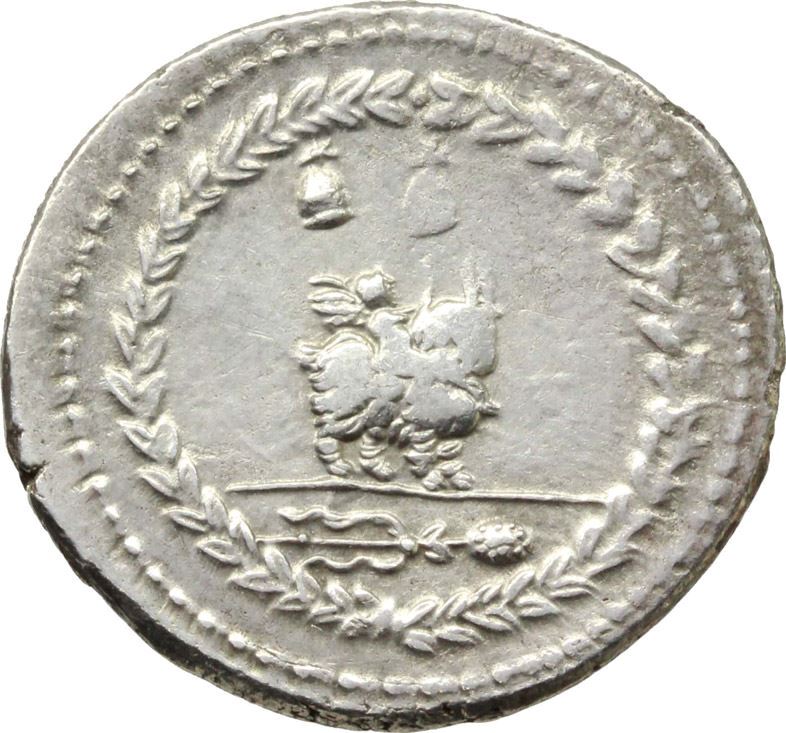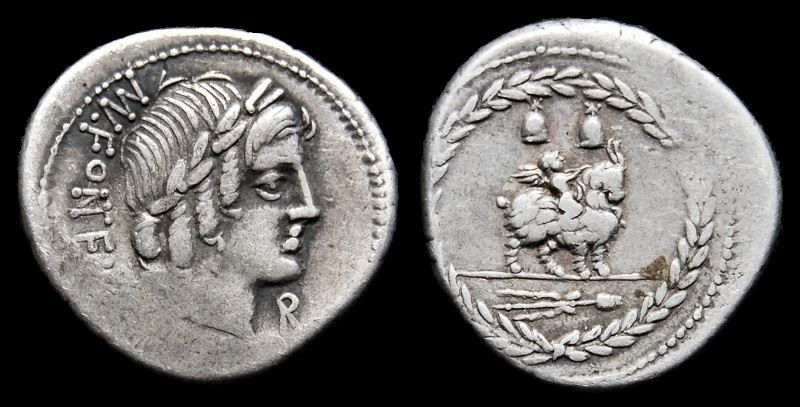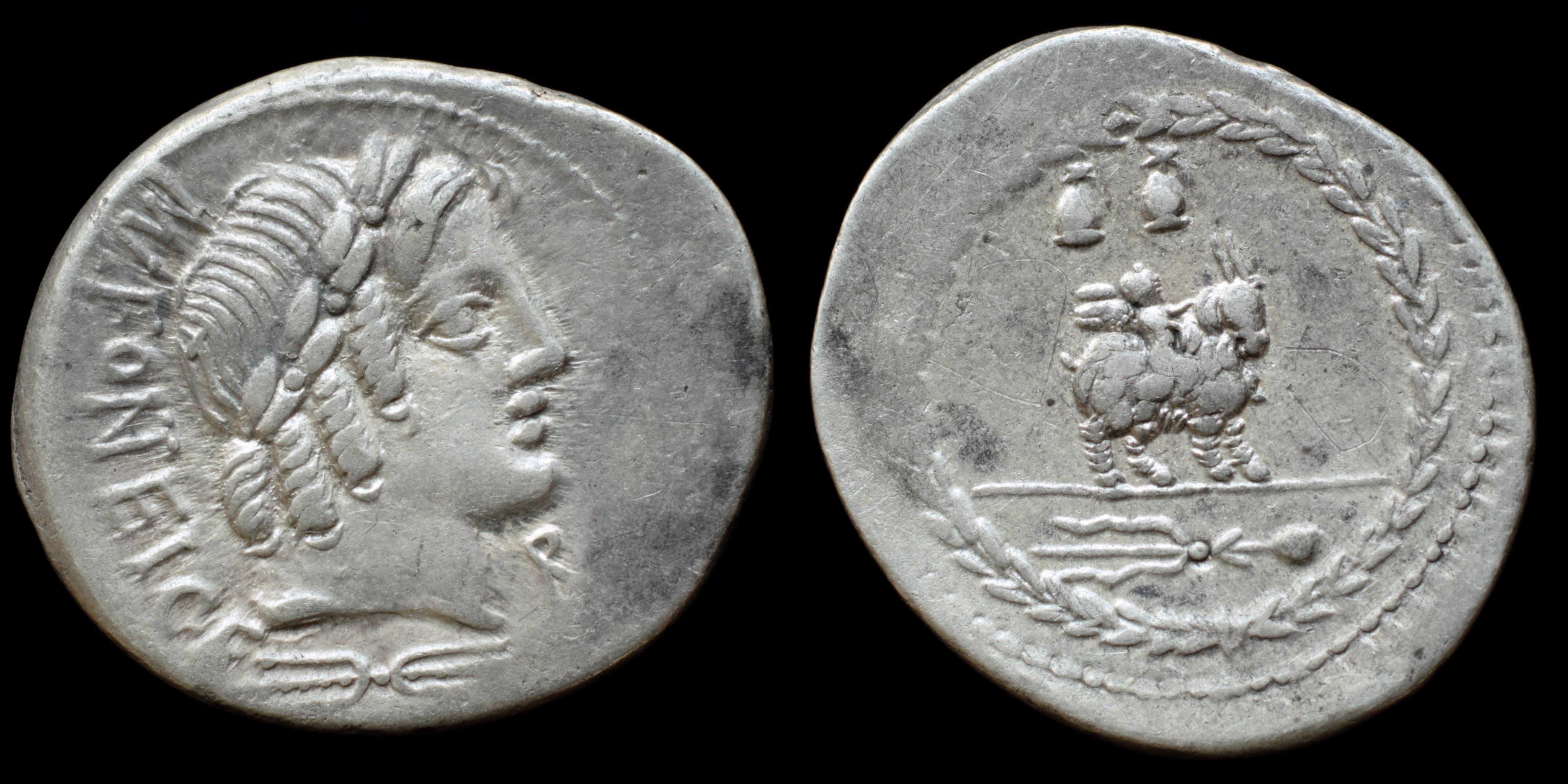Gens Fonteia was a plebeian family at Rome. Members of this gens are first mentioned toward the end of the third century.
In his oration, Pro Fonteio, Cicero mentions that the Fonteii came originally from Tusculum, of which municipium it was one of the most distinguished families. The Fonteii claimed descent from Fontus, the son of Janus.


Reverse: Infant winged Genius (or Cupid) seated on goat standing right; pilei of the Dioscuri above; thyrsus with fillet in exergue; all within laurel wreath.
Die Orientation: 10 H
Weight: 3.93 g
"The moneyer is perhaps the brother of the moneyer M. Fonteius (see Crawford 347) and not inconceivably the tribune featured on the reverse of Crawford 429/1. The reverse recalls that the god Jupiter was suckled by the she-goat Amaltheia on Mt. Ida during his infancy, and depicts a statue that was within the Temple of Vejovis in Rome.
Romans believed that Vejovis was one of the first gods to be born. He was a god of healing, and was later associated with the Greek Asclepius. He was mostly worshipped in Rome and Bovillae in Latium. On the Capitoline Hill and on the Tiber Island, temples were erected in his honour. In spring, goats were sacrificed to avert plagues.
Vejovis is portrayed as a young man, holding a bunch of arrows, pilum, (or lightning bolts) in his hand, and is accompanied by a goat. He may be based on the Etruscan god of vendetta, known to them by the name Vetis written on the Piacenza Liver, a bronze model used in haruspical divination.
The studies about Vejovis are very poor and unclear. They show a constant updating of his condition and his use by people: escaping from netherworld, Volcanic God responsible for marshland and earthquakes, and later guardian angel in charge of slaves and fighters refusing to lose. God of deceivers, he was called to protect right causes and to give pain and deception to enemies. His temple has been described as a haven safe from police for wrongly persecuted people, and dedicated to the protection of the new comers in Rome, but this view is probably wrong.
The legend shows him more like an entity escaping from hell and trying to join the light and heaven, awesome fighter and protector of any people victims of unfairness. Aulus Gellius, in the Noctes Atticae, speculated that Vejovis was the inverse or ill-omened counterpart of Jupiter; compare Summanus. Aulus Gellius observes that the particle ve- that prefixes the name of the god also appears in Latin words such as vesanus, "insane," and thus interprets the name Vejovis as the anti-Jove. Aulus Gellius also informs us that Vejovis received the sacrifice of a female goat, sacrificed ritu humano; this obscure phrase could either mean "after the manner of a human sacrifice" or "in the manner of a burial." "
.jpg)
Reverse: Infant Genius (or Cupid) seated on goat right; pilei of the Dioscuri above; below, thrysus right; all within wreath
Die Orientation: 3 H
Weight: 4.07 g

Reverse: Cupid seated on goat right, caps of the Dioscuri above, thyrsus of Bacchus in exergue, all within laurel wreath
Die Orientation: -
Weight: 4 g
